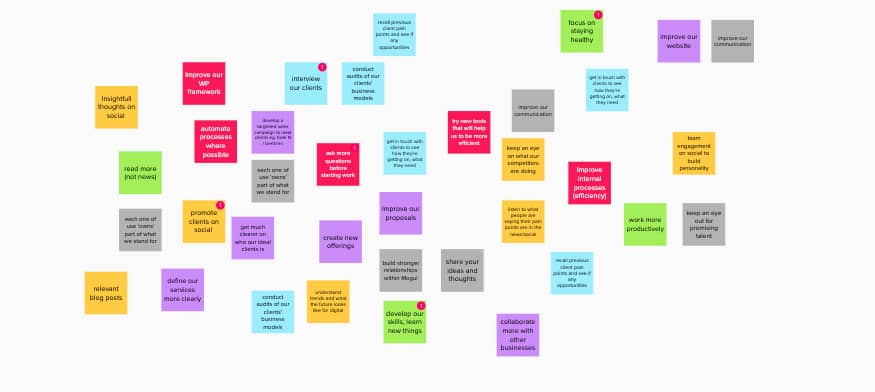Like most businesses in the world, we’ve taken a hit with COVID. We have had clients cancel, postpone, and unfortunately, some of them have gone out of business.
And while we have been lucky enough to still have work to do through lockdown, we haven’t been at full capacity with billable work so we talked to the team about how they might help us to come out of lockdown stronger.
At the time we couldn’t jump into the boardroom at the office around the whiteboard, so we used Mural, a virtual whiteboard app, and had a team session to brainstorm about improvements we could make, and identify new opportunities.
Here is the session structure we used:
1. We defined our problem statement
We started with our problem statement. It was important to define exactly the problem that we were trying to solve. This focused everyone on the task at hand, and if the conversation started to go down rabbit holes, we could bring everyone back to it:

2. We brainstormed as many ideas as we could
Everyone got their thinking caps on and created sticky notes for every idea that popped into their heads. There are a few rules of brainstorming:
- defer judgement
- go for volume
- stay on topic
- build on the ideas of others
- encourage wild ideas
- be visual
…but there were no bad ideas, we were looking for ALL the ideas. PS. These were the ones that were left of ours, there were twice as many, and we moved the others into the next stage of the session – grouping ideas.

3. We grouped our ideas into similar ideas
Then we voted on the ideas we liked the most, and moved them to the grouping stage and sorted through similar ideas from the brainstorm, removed double-ups etc.
We were left with 6 key areas for focus and improvement that everyone in the team felt would help Mogul to use our time to be a better, stronger company.

4. We prioritised by importance and feasibility
But how to prioritise? Not all of these can be done at once, and not all are important, and some of them are much harder than others.
So we put the ideas on the grid to work out which ideas were important and which were feasible. And we ended up with a cluster of ideas and opportunities in the top right corner that we all felt were very important, and highly feasible.

The session took 2 hours all up and we came out of it with some clear priorities which were assigned people to ‘own’ and be responsible for. A lot of the opportunities were for ourselves in terms of self-development and team culture and every individual has taken responsibility for those things.
Now might be a great time to look at how your company can come become stronger, and better. And hopefully, this structure can help you to facilitate an engaging session with your team.